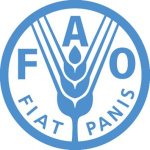- Industry: Agriculture
- Number of terms: 87409
- Number of blossaries: 0
- Company Profile:
Established in October 1945 with the objective of eliminating hunger and improving nutrition and standards of living by increasing agricultural productivity, FAO coordinates the efforts of governments and technical agencies in programs for developing agriculture, forestry, fisheries, and land and ...
In AnGR: All conservation of genetic material <i>in vivo,</i> but out of the environment in which it developed, and <i>in vitro</i> including, <i>inter alia,</i> the cryoconservation of semen, oocytes, embryos, cells or tissues. Note that <i>ex situ</i> conservation and <i>ex situ</i> preservation are considered here to be synonymous.
Industry:Biotechnology
In AnGR: All input-output relationships, over time, at a particular location. The relationships will include biological, climatic, economic, social, cultural and political factors, which combine to determine the productive potential of a particular livestock enterprise.
* high-input production environment: A production environment where all rate-limiting inputs to animal production can be managed to ensure high levels of survival, reproduction and output. Output and production risks are constrained primarily by managerial decisions.
* medium-input production environment: A production environment where management of the available resources has the scope to overcome the negative effects of the environment on animal production, although it is common for one or more factors to limit output, survival or reproduction in a serious fashion.
* low-input production environment: A production environment where one or more rate-limiting inputs impose continuous or variable severe pressure on livestock, resulting in low survival, reproductive rate or output. Output and production risks are exposed to major influences which may go beyond human management capacity.
Industry:Biotechnology
In AnGR: All measures to maintain live animal breeding populations, including those involved in active breeding programmes in the agro-ecosystem where they either developed or are now normally found, together with husbandry activities that are undertaken to ensure the continued contribution of these resources to sustainable food and agricultural production, now and in the future.
Industry:Biotechnology
In AnGR: Any breed that may become extinct if the factors causing its decline in numbers are not eliminated or mitigated.
Breeds may he in danger of becoming extinct for a variety of reasons. Risk of extinction may result from, <i>inter alia,</i> low population size; direct and indirect impacts of policy at the farm, country or international levels; lack of proper breed organization; or lack of adaptation to market demands. Breeds are categorized as to their risk status on the basis of, <i>inter alia,</i> the actual numbers of male and/or female breeding individuals and the percentage of pure-bred females. FAO has established categories of risk status: critical, endangered, critical-maintained, endangered-maintained, and not-at-risk.
Industry:Biotechnology
In AnGR: Categories where critical or endangered breeds are being maintained by an active public conservation programme or within a commercial or research facility.
Industry:Biotechnology
In AnGR: Categories where critical or endangered breeds are being maintained by an active public conservation programme or within a commercial or research facility.
Industry:Biotechnology
In AnGR: Characteristics of animals, such as the quantity or quality of the milk, meat, fibre, eggs, draught, etc., they (or their progeny) produce, which contribute directly to the value of the animals for the farmer, and that are identifiable or measurable at the individual level. Production traits of farm animals ate generally quantitatively inherited, i.e., they are influenced by many genes whose expression in a particular animal also reflects environmental influences.
Industry:Biotechnology
In AnGR: Measurement of the characteristics that are important for production and adaptation, either of individual animals or of populations, most commonly in the context of comparative evaluation of the traits of animals or of populations.
Industry:Biotechnology
In AnGR: Refers to all human activities, including strategies, plans, policies and actions, undertaken to ensure that the diversity of farm animal genetic resources is being maintained to contribute to food and agricultural production and productivity; now and in the future.
Industry:Biotechnology
In AnGR: Storage of DNA, which may or may not be the complete genome, but should always be accompanied by inventory information. <i>(Note:</i> at the present time, animals cannot be re-established from DNA alone.)
Industry:Biotechnology
